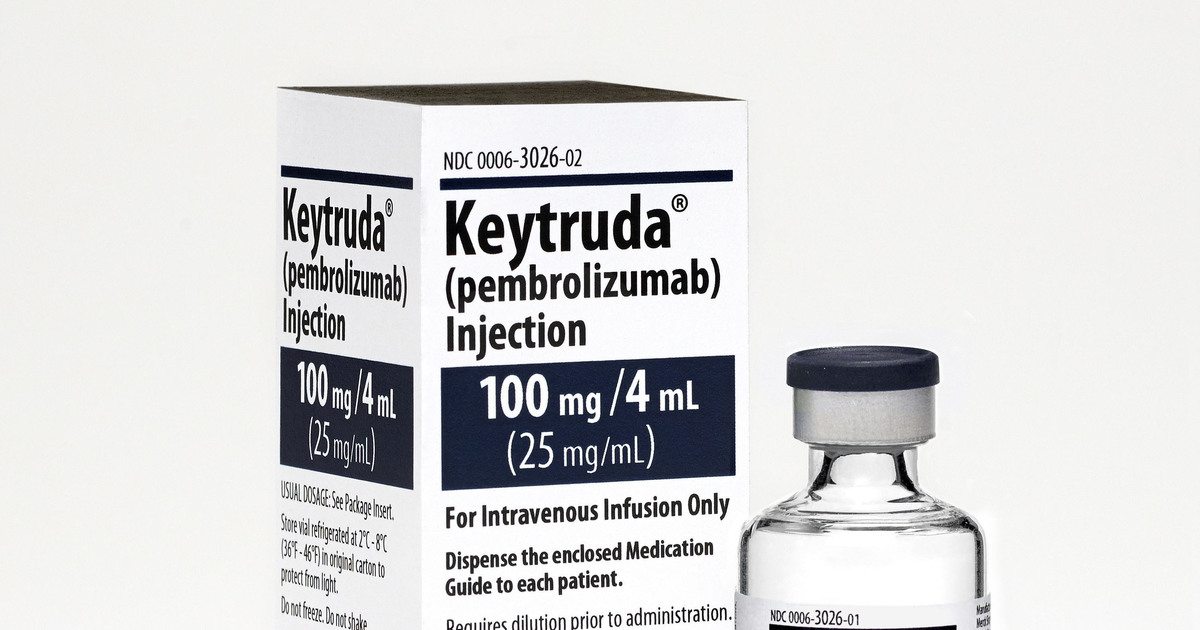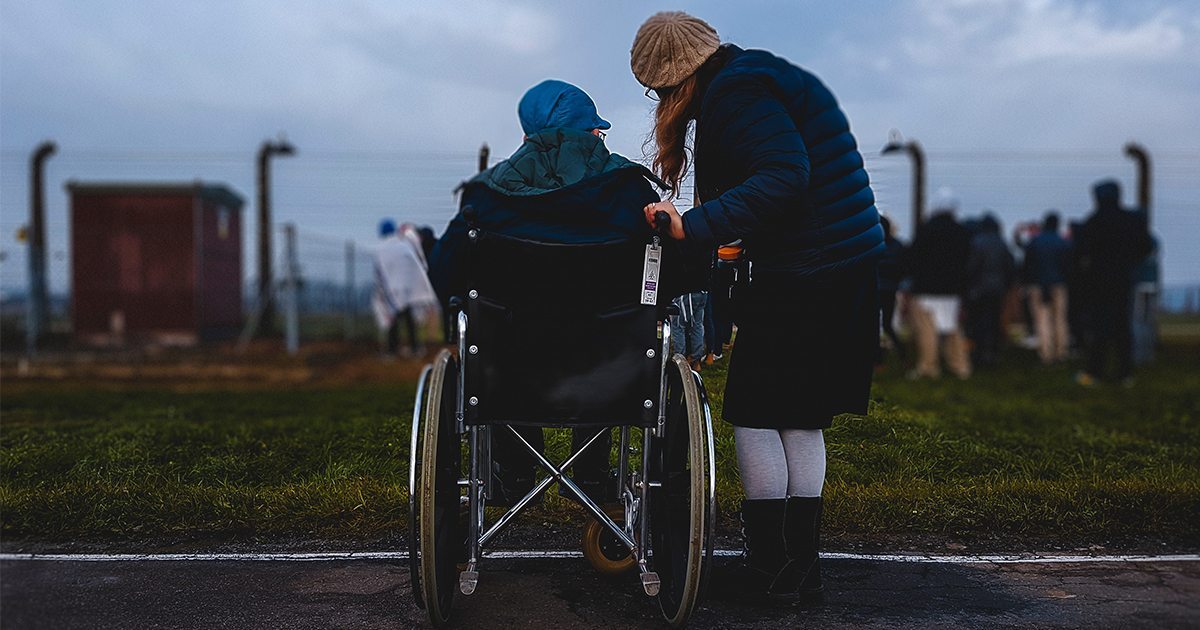Category: Featured News

A Month of Advocacy, Education and Support for Mesothelioma Patients and Their Families
November is filled with opportunities for mesothelioma patients and their families to raise awareness of the disease, and to educate the American public of the issues facing the mesothelioma community. Not only is November Lung Cancer Awareness Month, but it is also National Hospice and Palliative Care Month and National Family Caregivers Month.
Those who live with pleural mesothelioma, and those who care for someone with mesothelioma, know that educating the public about the struggles facing rare disease sufferers often takes a focused effort from organizations, the government, the medical community and many volunteers. Join in with the organizations sponsoring the campaigns that are dedicated to promoting awareness, honoring those dealing with terminal cancers and to increasing support for the communities.
According to the Lung Cancer Alliance, lung cancer is the deadliest cancer in the world. In fact, more people die from lung cancer than breast, colon and pancreatic cancers combined. Over 158,000 Americans die from lung cancer each year – that is approximately 432 Americans every day. Pleural mesothelioma, a rare, aggressive form of lung cancer caused by past exposure to asbestos, is one of the most difficult cancers to treat and is diagnosed in close to 3,000 Americans each year.
Many mesothelioma patients are faced with treatments aimed at managing their symptoms and improving their quality of life as the tumors continue to spread and their health declines. Doctors often order palliative care which is intended to control pain, stop bleeding, relieve pressure, and to allow patients to be at home with their loved ones.
According to the National Hospice and Palliative Care Organization (NHPCO), “every year more than 1.6 to 1.7 million Americans living with life-limiting illness, and their families, received care from the nation’s hospice programs in communities throughout the United States.”
With an effort to encourage citizens to increase their understanding and awareness of care at the end of life, NHPCO has declared November National Hospice and Palliative Care Month. NHPCO encourages everyone to “celebrate all that the hospice and palliative care community has achieved.”
National Family Caregivers Month is also a time to recognize mesothelioma patients and their families. According to the Caregiver Action Network, more than 65 million family caregivers in this country fulfill a vital role on the care team. For mesothelioma patients, the caregivers are vital for helping them follow their medical, dietary and exercise regimens. Caregivers are called upon to deal with the myriad medical appointments, medical bills, updates to other family members and friends as well as ensuring that the household runs efficiently.
In this year’s presidential proclamation recognizing November as National Family Caregivers Month President Obama declared:
“For centuries, we have been driven by the belief that we all have certain obligations to one another. Every day, caregivers across our country answer this call and lift up the lives of loved ones who need additional support. During National Family Caregivers Month, let us honor their contributions and pledge to continue working toward a future where all caregivers know the same support and understanding they show for those they look after.”
This year, CAN is focusing on the theme “Respite: Care for Caregivers.” The organization reports that a respite for the caregiver is not a luxury, rather “the chance to take a breather, the opportunity to re-energize.” And, CAN reports, this is critical for the caregiver to protect his or her well-being.
To find out what you can do to help mesothelioma patients and their families during November visit these organizations’ websites: Caregiver Action Network, Lung Cancer Alliance, National Hospice and Palliative Care Organization.
Know more about Mesothelioma and how you can deal with it.
Sources
- Lung Cancer Alliance
http://www.kintera.org/faf/error/errorEvent.asp?err=c&ievent=347722&lis=1&kntae347722=B249B0A66E2742FDAC6A93B9B4BE2FD4 - National Hospice and Palliative Care Organization
http://www.nhpco.org/press-room/press-releases/national-hospice-and-palliative-care-month-proclamation - Caregiver Action Network
http://caregiveraction.org - President Obama
https://obamawhitehouse.archives.gov/the-press-office/2015/10/30/presidential-proclamation-national-family-caregivers-month-2015

Mesothelioma Community Celebrates FDA Approval of Keytruda for Lung Cancer Treatment
The mesothelioma community is hailing the recent U.S. Food and Drug Administration’s approval of Keytruda for advanced (metastatic) non-small cell lung cancer (NSCLC). A recent U.S. clinical trial found Keytruda to be effective in controlling mesothelioma tumors in three-fourths of patients, leading researchers to say the results are “encouraging.” The FDA’s approval moves the drug one step closer to U.S. mesothelioma patients.
In an Oct. 2 press release, the FDA announced approval of the immunotherapy drug from Merck, previously approved for use in the treatment of melanoma, for use in the treatment of NSCLC in patients whose disease has progressed after other treatments and with tumors that express a protein called PD-L1. A companion diagnostic test will be used to detect the PD-L1 biomarker in patients.
“Today’s approval of Keytruda is the result of our deep commitment to bring the benefits of immunotherapy to cancer patients,” said Dr. Roger M. Perlmutter, president, Merck Research Laboratories, in Merck’s Oct. 2 press release announcing the approval. “Together with scientists and physicians around the world, we endeavor to improve the lives of patients suffering from these grievous illnesses.”
Keytruda works by targeting the cellular pathway known as PD-1/PD-L1 (proteins found on the body’s immune cells and some cancer cells). By blocking this pathway, Keytruda may help the body’s immune system fight the cancer cells.
Like lung cancer, pleural mesothelioma is an aggressive cancer that is challenging to treat. Pleural mesothelioma is an insidious cancer that lurks in the body for decades until symptoms suddenly appear leaving the patient with life-threatening complications. The asbestos-caused cancer affects the lining of the lungs and often leaves patients with less than 18 months to live after diagnosis.
According to one study from Spanish researchers, PD-L1 is expressed in approximately 20 percent of pleural mesothelioma patients. The researchers reported, “The results of our study could offer new treatment to this population of patients, identifying a subset of malignant pleural mesothelioma who expressed PD-L1 and could be treated with targeted therapies to PD-L1.”
Mavis Nye, a six-year mesothelioma survivor, of England, has been a patient for over a year in a Phase I, no placebo clinical trial for Keytruda, still known as MK-3475 in the UK. Mavis says she has seen “brilliant” results with the drug. Mavis told MesotheliomaHelp that she has nearly complete tumor shrinkage, and “I’m feeling very well as my immune system has been turned back on by the drug.”
Lou Williams of Australia, a 13 year mesothelioma survivor, has received eight treatments of Keytruda, and will continue on it indefinitely. She told MesotheliomaHelp, “Keytruda has given me back my life, as my body was literally shutting down. I am now once again living my life with quality, strength and determination.”
Others in the mesothelioma community are hoping for the same results, and Lou and Mavis have both been tireless advocates in trying to bring the drug to others in their respective countries. While Mavis pushes for broader clinical trial participation, Lou pushes for reduced costs for the drug in her home country.
Hopefully, the time has arrived for an effective treatment for mesothelioma and lung cancer across the globe.
“Our growing understanding of underlying molecular pathways and how our immune system interacts with cancer is leading to important advances in medicine,” said Richard Pazdur, M.D., director of the Office of Hematology and Oncology Products in the FDA’s Center for Drug Evaluation and Research, in the FDA press release. “Today’s approval of Keytruda gives physicians the ability to target specific patients who may be most likely to benefit from this drug.”
Talk to your oncologist to see if Keytruda can be an effective treatment for you.
Sources:
- Oct. 2 press release (FDA announced approval of the immunotherapy)
http://www.fda.gov/NewsEvents/Newsroom/PressAnnouncements/ucm465444.htm - Merck’s Oct. 2 press release
http://www.mercknewsroom.com/news-release/prescription-medicine-news/fda-approves-keytruda-pembrolizumab-treatment-patients-metas - Spanish researchers
http://www.esmo.org/Conferences/Past-Conferences/ESMO-2014-Congress/Press-Media/Studies-Report-New-Findings-on-Treatment-Options-for-Mesothelioma

Paddling the Hudson River to Raise Awareness and Funds for Mesothelioma
Attorney Joseph W. Belluck of the New York law firm of Belluck & Fox, and his son, William, took to the Hudson River and kayaked in the Kayaking4Meso event, held September 12 in Stillwater, NY. The event, in its fifth year, is held to raise awareness, and funds, in the fight against mesothelioma, an aggressive cancer caused by asbestos exposure. Belluck & Fox, LLP has sponsored the event, planned in conjunction with National Mesothelioma Awareness Day held Sept. 26, every year.
“Belluck & Fox, LLP has been a sponsor of the event since its inception and we are proud to be able to help raise money for mesothelioma research,” said Belluck. “There are several other law firms who sponsor the event but we are the only firm that also shows up to kayak.”
The event grew out of a father’s love of his daughter who was diagnosed with peritoneal mesothelioma as a teenager and was given just twelve months to live. Mark Wells, whose daughter, Linda, was diagnosed with peritoneal mesothelioma at age 16, organizes the annual Kayaking4Meso event to raise awareness and Money for Mesothelioma Research.
“Linda is my inspiration for doing what I do,” said Wells in an email to Mesothelioma Help. “Realizing there was no cure, I figured the next best thing to do was to raise awareness and money for research.”
Expert Insight
Mark Wells, Kayaking4Meso Organizer
“Don’t ever give up hope. Research is going on every day and new trials are available often. I will continue to raise awareness and money for research.”
Peritoneal mesothelioma is a form of cancer that is almost always caused by asbestos exposure and affects the lining of the abdomen. While there are close to 3,000 cases of all forms of mesothelioma diagnosed in the U.S. each year, less than 10% of those are peritoneal. The cancer, which is often associated with former industrial workers who were exposed to asbestos decades ago, is virtually unheard of among young adults.
Linda is the youngest person Wells knows who has been diagnosed with mesothelioma. She has battled the disease for “almost half her life and is now one of the longest survivors I know,” said Wells. Linda has lived with the disease for 13 years.
“She is doing as well as can be expected for what she’s been thru,” Wells added.
Raising Money to Find a Mesothelioma Cure
In 2011, Mark Wells and two friends paddled from Schuylerville to Mechanicville. The trio kayaked about 16 miles through locks 4 and 3. Five years later, over 150 boaters lined up to kayak down the Hudson River from Admiral’s Marina in Stillwater thru Mechanicville, ending at Lighthouse Park in Halfmoon. The eight mile paddle took the group thru Locks 4, 3 and 2 during the 3.5 hour excursion.
“This year was especially rewarding to see over 150 kayakers come out to attend and support our cause, including Joe Belluck himself,” Wells said. “Our biggest event ever and Joe has been a part of it every year. I think his commitment to help us from the beginning inspired me into making this a successful event,” said Wells. “It’s made a huge difference to me and the success of our event.”
Expert Insight
“This is symbolic of what makes our law firm different from the other lawyers that represent people with mesothelioma – whether it’s participating in an event like this or representing one of our clients – we fully commit our time and energy.”
Share on Facebook
The money raised during the event goes to the Mesothelioma Applied Research Foundation. The organization is the only non-profit organization dedicated to ending mesothelioma and the suffering caused by it, according to the Meso Foundation’s website.
Wells said the Meso Foundation has helped his and many other families with knowledge and advocacy by directing them to doctors, hospitals, and clinical trials.
Wells said the events have raised more than $40,000 to date to aid in research to find a cure.
“I think the thing that impacts me most is the meso family that we have created with this event, with six meso survivors attending and over 30 family members,” said Wells. “I think it means a lot to all us to get together to support each other.”
Asbestos Along the Hudson River
Belluck, a mesothelioma lawyer who has been advocating for mesothelioma patients and their families for over 15 years, finds the irony in the event organized to raise money to fight an asbestos-caused disease. He fights for compensation for victims of asbestos-related diseases, he says, and the route took the paddlers through three of the Champlain Canal Locks that allowed so many of the companies that the firm’s clients worked at to prosper.
“This stretch of the Hudson north of Albany is beautiful, the leaves have begun to turn and it’s a gorgeous fall day,” Belluck said of last Saturday’s event. “But, we also paddled past some of the factories where our clients worked, and one area of the Hudson where the soil is being dredged and renewed from the toxic substances that not only injured our clients but also poisoned this beautiful river. And perhaps that is a good metaphor for why we do this work.”
Mesothelioma is an asbestos-related cancer that is usually diagnosed in older men – after spending years as trade workers such as insulators, plumbers and pipefitters, electricians and sheet metal workers. With an extended incubation period, it is often not diagnosed for decades after asbestos exposure. Approximately 2,500 to 3,000 people in the United States are diagnosed with mesothelioma each year.
Sources :
- Kayaking4Meso
http://www.kayaking4meso.org - Meso Foundation’s website
http://www.curemeso.org/site/c.duIWJfNQKiL8G/b.8578185/k.6D0E/Meso_Foundation_Symposium.htm

Mesothelioma Survivor Lou Williams Steps Up Her Drug Advocacy Efforts
Lou Williams wants to make the drug that has helped her survive mesothelioma affordable for her fellow Australians struggling with the asbestos cancer.
Lou lost her father to mesothelioma in 1985 and she has battled the disease herself for nearly 13 years. With the help of a new drug, Keytruda, Lou’s tumors have begun shrinking and she has a new lease on life.
“Keytruda has given me back my life, as my body was literally shutting down,” Lou told MesotheliomaHelp via email.
Expert Insight
“I am now once again living my life with quality, strength and determination.”
As her strength returns, so does her resolve to fight for other mesothelioma victims. She is now focused on making Keytruda available to Aussies at a reasonable cost.
On Sept. 3 Lou will have her eighth dose of Keytruda, an immunotherapy drug from Merck approved in the U.S. and Australia for melanoma, but not yet approved in either country for mesothelioma. For Australians, that means a mesothelioma patient must pay thousands of dollars per dose, administered every three weeks—a deal breaker for many.
Lou Working With Australia’s Pharmaceutical Benefits Scheme
Keytruda is being touted as one of the biggest breakthroughs in mesothelioma treatment. In the simplest of explanations, Keytruda enhances the body’s immune response to cancer, allowing natural defense mechanisms to kick in and fight mesothelioma tumors. A recent U.S. clinical trial found Keytruda to be effective in controlling mesothelioma tumors in three-fourths of patients, leading researchers to say the results are “encouraging.”
After having exhausted all of her treatment options earlier this year and being at death’s door, Lou has, with regular Keytruda doses, rebounded beyond what she and others thought was possible. She said in an August 20 Examiner article that her palliative care nurse, husband and oncologist all say her recovery has been “miraculous.”
It has also been expensive. Lou acknowledged in a recent blog post that having quality of life back is priceless, but “Our credit card is taking a battering.”
To make Keytruda more accessible for other mesothelioma sufferers, Lou’s goal is to get the drug added to the Pharmaceutical Benefits Scheme (PBS). This would allow Australian oncologists to offer the treatment to mesothelioma patients free of charge or for a negligible amount.
The PBS is a government run service available to all Australian residents who hold a current Medicare card. Through the PBS, the Australian government subsidizes the cost of medicine for most medical conditions.
“We need to have Keytruda in the PBS list alongside melanoma so others diagnosed with mesothelioma can have another treatment option to discuss with their oncologist,” Lou said.
Lou and her husband met with their local Federal Member of Parliament in late July to get the PBS to accept Keytruda on the mesothelioma treatment list. She reported in her August 4 post that her local Member Parliament’s office told her that they have made initial contact with the drug company and are anticipating discussions later this month, a development Lou described as “very promising”.
Lou is passionate about seeing asbestos banned globally. Her work with the Asbestos Diseases Foundation of Australia, Asbestos Disease Awareness Organization of the U.S., and countless other organizations, as well as her non-stop media tour to get the word out about the dangers of asbestos, has impacted people worldwide.
But for Lou, it still is not enough.
“It would mean the world to me knowing that those diagnosed with mesothelioma can have freedom and peace of mind choice without the worry of cost to consider,” said Lou.
Follow Lou’s mesothelioma and advocacy battle on her blog at “Asbestos – Living with Mesothelioma in Australia – Louise (Lou) Williams.”
You can contact Lou at [email protected].
Photo Credit: The Examiner
Sources:
- Pharmaceutical Benefits Scheme
http://www.pbs.gov.au/info/about-the-pbs#What_are_the_current_patient_fees_and_charges

Study Shows That Asbestos Risks Remain Decades After Industry Departs
An Italian study published back in May found that malignant mesothelioma cases tend to be concentrated around industrial facilities that use asbestos. A new Italian study finds that mesothelioma incidence near industrial areas remains high long after an asbestos-using industry ceases operations.
Asbestos is the only known cause of mesothelioma, an incurable cancer affecting the membranous lining of the lungs and abdomen. Most cases of mesothelioma are related to occupational asbestos exposure. Cement factories, shipyards, automotive plants, food processing facilities, power plants, and steel plants are among the major sources of occupational asbestos exposure.
Not all asbestos exposure, however, is directly attributable to a person’s work activities. People can also be environmentally exposed to asbestos in areas where asbestos industries operate.
One such area is Casale Monferrato in Northwest Italy, the former home of the Eternit asbestos-cement plant, which closed in 1986. An Italian court in 2012 convicted the plant’s owners of causing the asbestos-related deaths of more than 3,000 people. While many of those people worked at the Eternit plant, others merely lived near the plant.
Casale Montferro is the subject of a study published recently in Occupational & Environmental Medicine. The study authors identified 200 cases of pleural mesothelioma diagnosed in Casale Montferro residents between 2001 and 2006 in an effort to quantify the association between pleural mesothelioma and asbestos exposure.
They discovered that the odds ratio (OR, a measure of association between an exposure and an outcome) of an asbestos-exposed individual developing mesothelioma ranged from 4.4 to 62.1, with increased exposure over time resulting in a higher OR. Subjects never occupationally exposed to asbestos had a mesothelioma OR of 3.8 to 23.3, while an OR of around 2 was observed for people living in homes near buildings with large asbestos cement parts.
The findings draw attention to the fact that asbestos health risks linger in the environment long after asbestos industries vacate. In addition, they serve as a reminder that asbestos disease can occur in people who never directly handled asbestos on the job.
“Risk of [pleural malignant mesothelioma] increased with cumulative asbestos exposure and also in analyses limited to subjects non-occupationally exposed. Our results also provide indication of risk associated with common sources of environmental exposure and are highly relevant for the evaluation of residual risk after the cessation of asbestos industrial use,” write the study authors.
The Italian study has implications for America and other countries with a history of industrial asbestos use. U.S. asbestos use peaked in the mid-70s, but asbestos diseases, which have a latency period of 10-40 years or more, continue to kill an estimated 12,000-15,000 Americans.
But the United States, unlike Italy, has not banned asbestos. While both countries deal with the residual presence of asbestos-containing materials from a bygone industrial era, the United States is unique among industrialized nation for its ongoing importation and use of asbestos.
Anyone interested in taking part in the fight against asbestos should visit the EWG Action Fund website.
Free Mesothelioma Patient & Treatment Guide
We’d like to offer you our in-depth guide, “A Patient’s Guide to Mesothelioma,” absolutely free of charge.
It contains a wealth of information and resources to help you better understand the condition, choose (and afford) appropriate treatment, and exercise your legal right to compensation.
Download Now